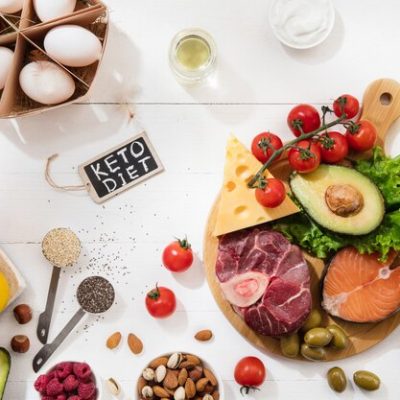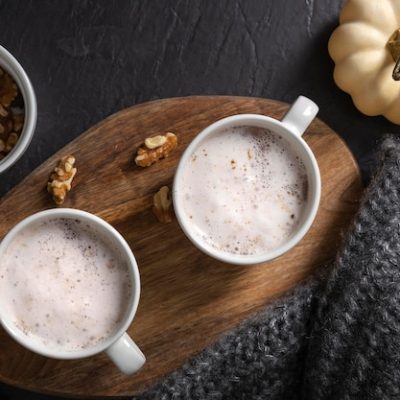This guest post is by Kaitlyn Ko from Happiness Comes in Tastes, who shares how to create healthy and tasty smoothie bowls at home. Kaitlyn offers tips and techniques to ensure your homemade smoothie bowls are packed with nutrients and have the perfect flavor and texture.
Smoothie bowls are nutrient-rich, low in calories, and taste like ice cream. They can be enjoyed for breakfast or dessert and typically include all three macronutrients. It’s no surprise that this health food trend took the internet by storm, and even a year later, many of us are still savoring this delightful treat. They make for a quick, easy, and balanced meal, perfect for busy mornings! Whether you’re heading to school or work, you’ll feel nourished and ready for the day.
When I discovered smoothie bowls, I was hooked! Since then, I’ve made countless smoothie bowls, trying out new recipes and ways to enhance their taste and nutrition. Over time, I’ve developed the best method for making smoothie bowls using both high-quality and budget-friendly blenders, ensuring they are as delicious and nutritious as possible!
This post may contain affiliate links, which help keep this content free. Please read our disclosure for more information.
Let me clarify: this is not just a smoothie poured into a bowl. That would be a disservice to the name of smoothie bowls! If you’re not familiar with them, let me explain. Smoothie bowls have the same ingredients as smoothies but with a much thicker texture. A true smoothie bowl should be thick enough that you can hold a spoon upside down without the smoothie falling off, as shown in the linked video below. In essence, they are like the Dairy Queen Blizzards of the health world: thick, creamy, and irresistibly delicious. You won’t feel like you’re eating “health food” at all.
So, how do you create the perfect smoothie bowl? You can either buy frozen fruits and vegetables that are already cut into small pieces or slice fresh produce into half-inch pieces before freezing them. This helps your smoothie blend smoothly with less liquid. The most common mistake when making smoothie bowls is adding too much liquid. Conversely, if you don’t add enough, your blender will struggle to mix the ingredients. Start with a small amount (about ½ cup per serving) and add more if needed. Ice cubes turn into slush when blended, and we want a creamy ice cream-like consistency. If your smoothie is too sweet from the fruit or you’re looking to cut calories, consider using frozen vegetables instead. I’ll provide a list of the best vegetables to add to smoothies without altering the flavor.
A good blender can save you time and effort when making smoothie bowls. While you can certainly use a regular blender (which I did at first), having a high-quality blender will definitely make a difference! Here are some of my top blender recommendations:
1. Ninja BN701 Professional Plus Blender with Auto-iQ
This is the exact blender I own and love. I highly recommend it; it’s a great deal for its quality.
2. Ninja Foodi Smoothie Bowl Maker and Nutrient Extractor
I’ve been eyeing this blender for a while and have seen excellent reviews. It looks very convenient for making small, single-serve portions, which could be especially helpful for students or those living alone.
3. Vitamix
Arguably the most reputable blender brand on the market, but also the priciest. Investing in a Vitamix guarantees you a high-quality blender, making it a great choice if you plan to use it often.
Using a regular blender to make thick smoothie bowls requires a bit more effort, but your patience will pay off. Regardless of the blender you use, it’s crucial to add the right amount of liquid. With weaker blenders, it’s essential to add enough liquid for the fruits to blend smoothly.
Next, you’ll use a technique I call the “shake and stab.” (Despite the silly name, it has proven effective many times.) Here’s how to “shake and stab”:
1. Every 5-10 seconds, pause the blender and shake it until the ingredients settle at the bottom.
2. Open it up and stir the contents with a blender stick, large spoon, or butter knife, distributing the solids and liquid evenly.
3. Screw the cap back on and blend again.
4. Repeat until you achieve the desired consistency.
For a video tutorial, check out Ashley Wicka’s video on how to make thick smoothie bowls, along with three recipes.
To create a balanced meal, we need to add more than just fruit! I love incorporating frozen vegetables (you won’t taste them, I promise!), protein sources, and healthy fats. Here are some of my favorite ways to boost the nutrition in my smoothie bowls:
– Frozen zucchini is my favorite vegetable to add! It doesn’t alter the flavor, and if you peel it, it won’t change the color either. It acts like ice cubes but gives a creamier texture.
– Frozen yellow squash is similar to zucchini but has a yellow peel. It’s a great alternative if you want to skip peeling zucchini and prefer not to see vegetables in your smoothie bowl.
– Frozen cauliflower or cauliflower rice is perfect for those who want to avoid preparing frozen vegetables. Most grocery stores carry these in their frozen sections.
– Fresh or frozen spinach is an excellent option for adding a lot of vegetables without changing the flavor. You can fill up a third or even half of your recipe with spinach without tasting it, although it does have a strong color.
– Frozen beets add a vibrant red color, especially when combined with berries. This is perfect if you want a colorful smoothie bowl to kickstart your day!
– Yogurt or plant-based yogurt alternatives provide a lovely creamy texture. Greek yogurt, in particular, is high in protein and offers beneficial probiotics and micronutrients.
– Tofu can also make your smoothie bowl creamier. It’s a fantastic plant-based protein source and doesn’t have the acidic taste often found in yogurts.
– Protein powder can introduce a variety of fun flavors to your smoothie bowls. You can choose a simple vanilla protein powder or get creative with flavors like mint chip or pumpkin spice, especially with fall approaching!
– Nut butters are a great source of healthy fats. Just a tablespoon or two can add a lot of flavor and creaminess.
– Avocado adds creaminess without significantly altering the taste. Some grocery stores even sell frozen avocado for an even thicker consistency.
– Coconut milk is also high in fat. You can use it as the liquid in your smoothie or freeze it into cubes. Some people use frozen coconut milk cubes as the base for their smoothie bowls instead of frozen fruit!
Lastly, here are some of my favorite smoothie bowl recipes! Most are vegan, dairy-free, and sugar-free, and you can always adjust them based on your dietary needs or preferences:
– Mint Chocolate Swirl Smoothie Bowl – Happiness Comes in Tastes
– Strawberry Banana Smoothie Bowl – Bakerita
– Pina Colada Smoothie Bowl – Twin Coast
– Mango Spinach Smoothie – Pick Up Limes
– Almond Butter Banana Smoothie Bowl – Happiness Comes in Tastes
– Dragon Fruit Smoothie Bowl – Sunkissed Kitchen
– Mocha Protein Smoothie Bowl – What Molly Made
There are countless smoothie bowl combinations to explore! Check out different recipes online or create your own.
Hi! I’m Kaitlyn, a rising junior in high school. I love all things food and health, which inspired me to start my blog, Happiness Comes in Tastes. As an aspiring dietitian, I aim to promote healthy eating among girls and young women. While I strive to be unaffected by the pervasive diet culture on social media, body image has been a significant struggle for me. As I work towards a healthy relationship with food, I hope to inspire other girls to do the same.
I share many nutritious and delicious recipes on my blog because healthy eating should be enjoyable and straightforward! As a busy student, I value convenience and affordability, so all my recipes are fun to make and eat. Join me on my journey to a happier and healthier lifestyle today!










